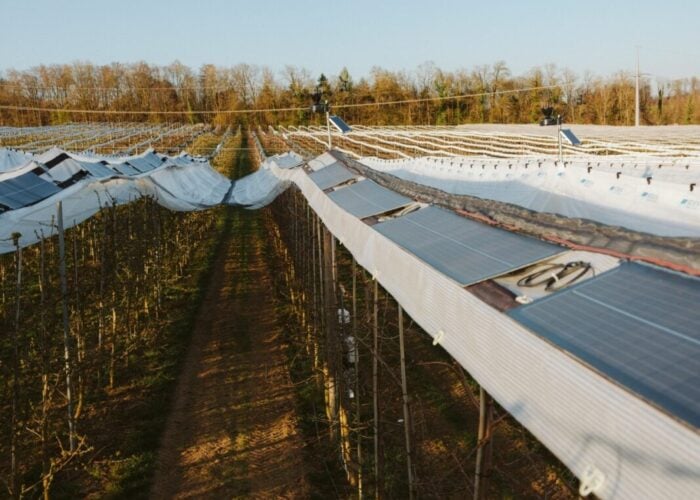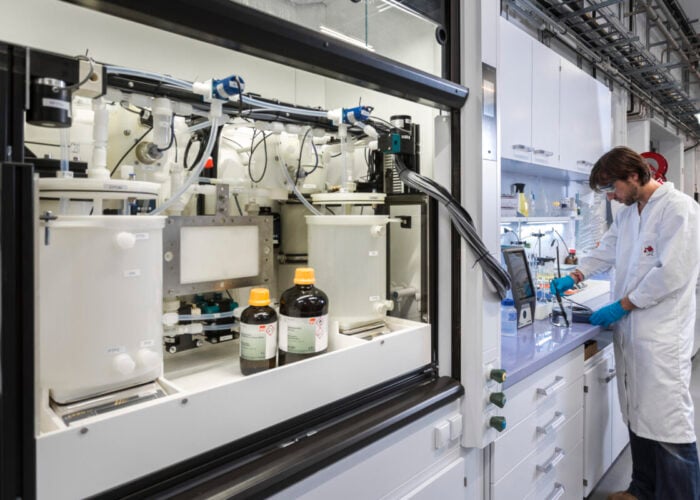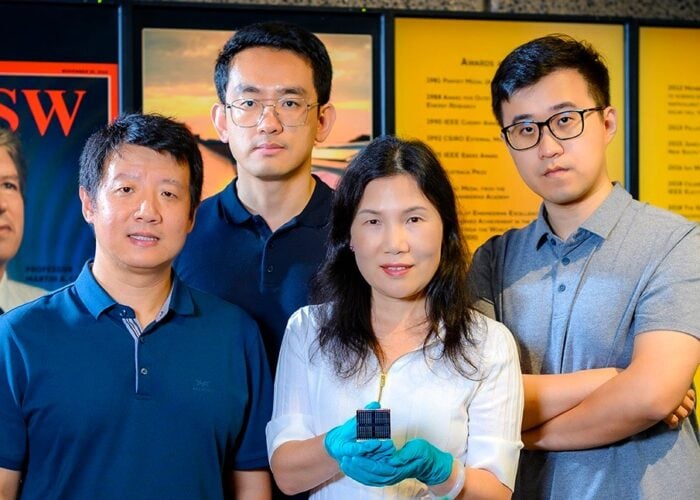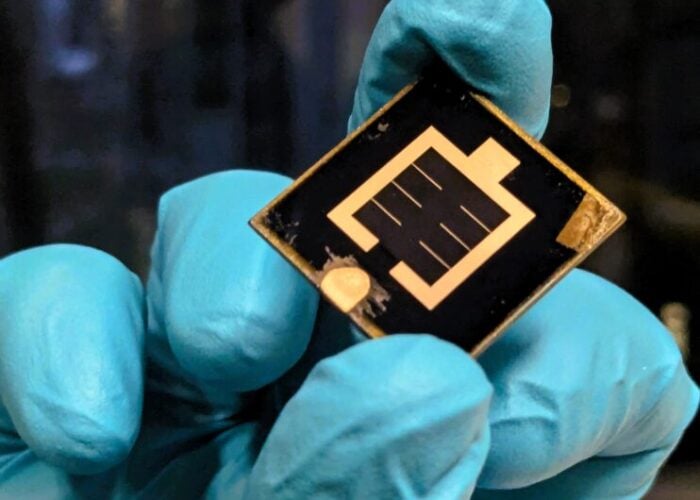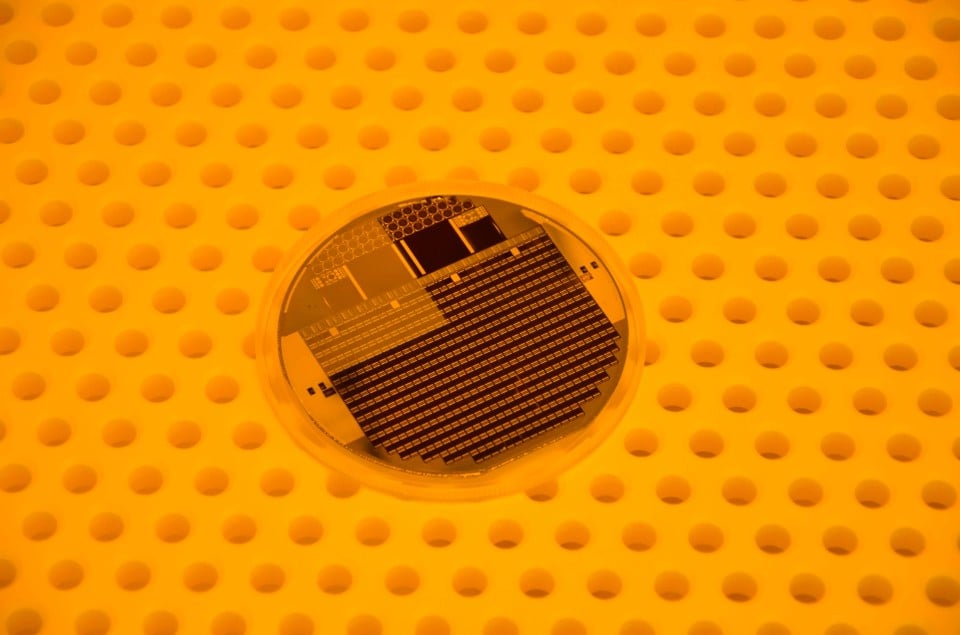
Researchers at the Fraunhofer Institute for Solar Energy Systems (ISE) have laid claim to a new solar cell efficiency record of 47.6%.
Researchers said the efficiency for a four-junction cell had been increased from 46.1% to 47.6% at a concentration of 665 suns, thanks to improvements in a four-layer antireflection coating applied to the tandem cell structure. This reduced resistance losses and the reflection on the front side of the cell.
Unlock unlimited access for 12 whole months of distinctive global analysis
Photovoltaics International is now included.
- Regular insight and analysis of the industry’s biggest developments
- In-depth interviews with the industry’s leading figures
- Unlimited digital access to the PV Tech Power journal catalogue
- Unlimited digital access to the Photovoltaics International journal catalogue
- Access to more than 1,000 technical papers
- Discounts on Solar Media’s portfolio of events, in-person and virtual
Or continue reading this article for free
The layer structure of this solar cell was developed back in 2016 alongside French semiconductor manufacturer Soitec, with the upper tandem solar cell made of gallium indium phosphide (GaInP) and aluminium gallium arsenide (AlGaAs), attached to a lower tandem solar cell made of gallium indium arsenide phosphide (GaInAsP) and gallium indium arsenide (GaInAs).
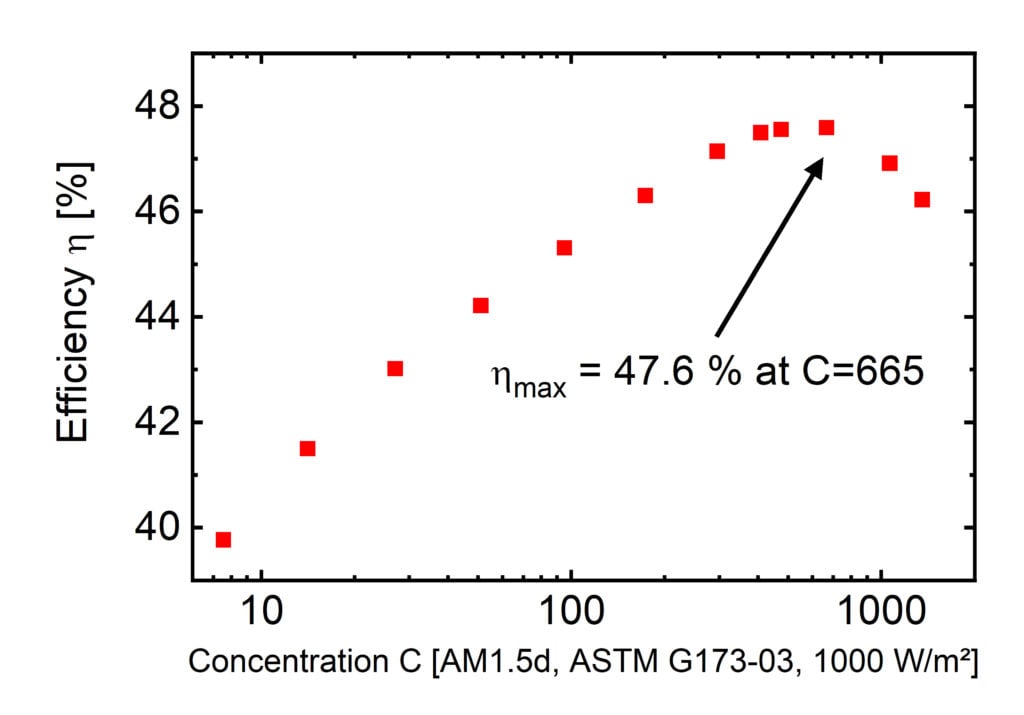
Conventional solar cells made of silicon can only absorb sunlight up to a wavelength of 1200 nanometres but Fraunhofer ISE’s record-breaking solar cell managed to expand the broad range up to 1780 nanometres.
The feature comes only two years after Fraunhofer started the “50 Percent” project, which aims to develop a solar cell with a 50% efficiency, and only one year after it opened its new Center for High Efficiency Solar Cells, said Frank Dimroth, department head of III-V Photovoltaics and Concentrator Technology at Fraunhofer ISE.
“In our research, we aim to make concentrating photovoltaics even more efficient and competitive, as we believe that this is the most sustainable form of renewable electricity generation,” added Dimroth.


